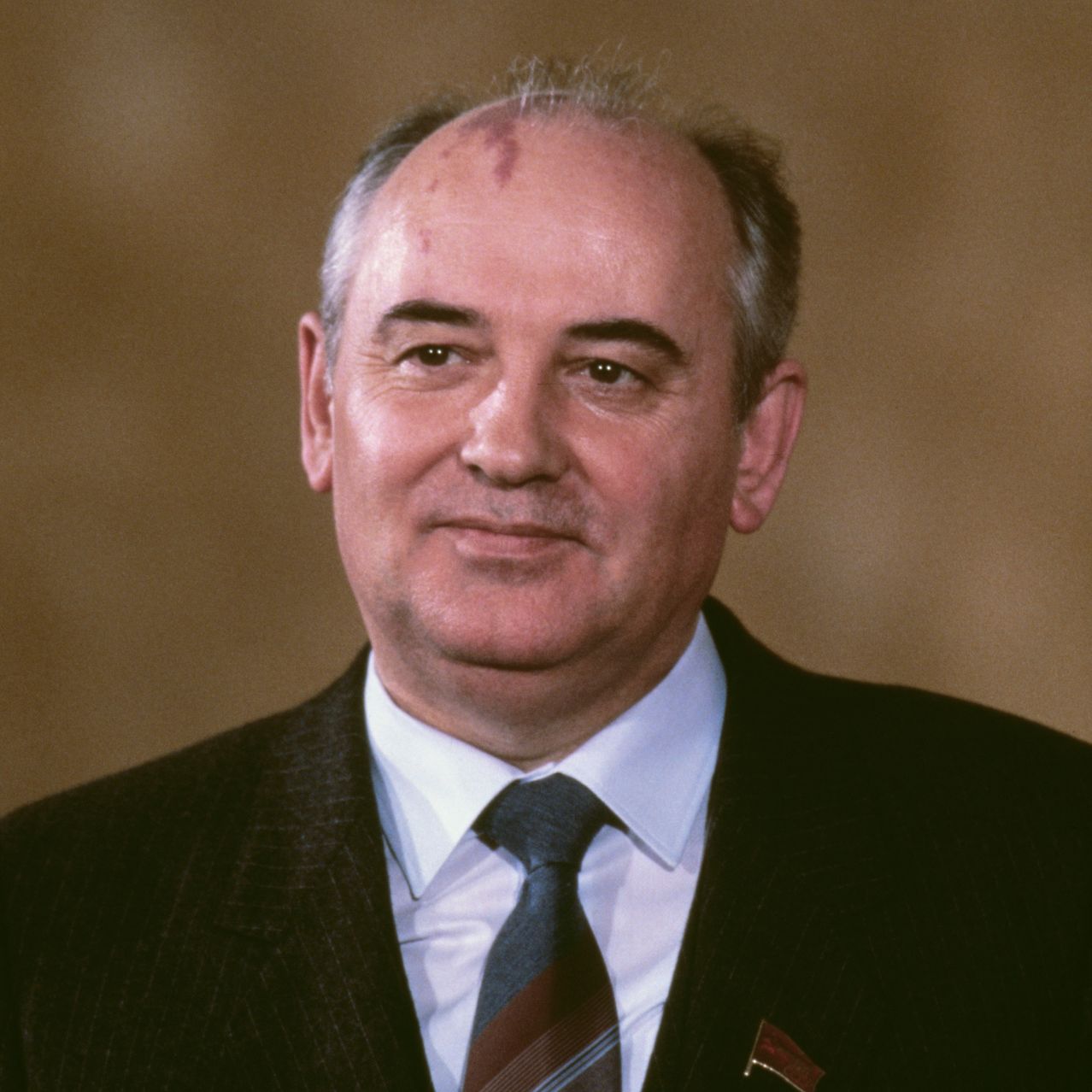 Yalta Conference, 1945
Yalta Conference, 1945
 NATO and Warsaw Pact, 1949-1968
NATO and Warsaw Pact, 1949-1968
 Korean War, 1950-1953
Korean War, 1950-1953
 Nikita Khrushchev
Nikita Khrushchev
 Leonid Brezhnev
Leonid Brezhnev
 Mikhail Gorbachev
Mikhail Gorbachev
Although the United States and Soviet Union were allies during World War
11, their different political and economic ideologies led them to separate.
The democratic, capitalist US was natural enemies with the totalitarian,
communist Soviet Union; however, direct conflict between the two never occured
because both were afraid of the other using atomic bombs; instead, they fought
proxy wars through other countries.
Prelude
During World War 11, the United States and Soviet Union became allies out of
necessity. Faced with a common enemy, they put aside their ideological
differences and defeated Nazi Germany. However, tensions began to build.
At the Yalta Conference in 1945, Britain, the US, and the Soviet Union
debated about how to establish a post-war Europe. The conflicting proposals
from the US and Soviet Union would foreshadow the beginning of the Cold War.
NATO v Warsaw Pact
Both the West and Soviet Union attempted to create spheres of influence in
Europe. NATO (1949) was the West's attempt to exercise the policy of "containment"
and stop the spread of communism, while the Warsaw Pact (1955) was the Soviet
Union creating communist governments and exercising control over them. Famously
described by Winston Churchill as an "Iron Curtain," Europe was split between
the two political systems. The Truman Doctrine in the US solidified the split
between the Soviet Union and America.
Korean War 1950-1953
In one of the first major conflicts of the Cold War, North Korea - backed by
the Soviet Union and China - invaded South Korea. The United Nations responded
with a joint military force of 16 countries. The Korean War was one of the first
examples of the American policy of containment, attempting to limit the spread of
communism in Europe and Asia. The war ended in an armistice with no significant ground
gained by either side. However, the UN had successfully limited the Soviet Union's
attempt to spread communism.
Political Changes in Russia
After the death of Joseph Stalin in 1953, Nikita Khrushchev became leader of
the Soviet Union in 1957. He pursued a policy of de-Stalinization, condemning
Stalin's brutal governing methods and opening the door for criticism of the
government and economic change in the Soviet Union. However, Khrushchev's
policies led to attempts in Eastern Europe for greater independence from
Soviet oversight, most of which were brutally supressed.
In 1964, Khrushchev was forced to resign due to his attempts at reform;
many agreed that he had tried to do too much too quickly. He was replaced
by Leonid Brezhnev. In 1968, Brezhnev proclaimed the "Brezhnev Doctrine"
which declared the Soviet Union's right to interfere in the politics of
other communist countries. Using this, Brezhnev supressed Czechoslovakia's
attempt at reforms during Prague Spring in 1968. He also began a policy of
"detente" (relaxation) with the United States, reducing arms and increasing
trade.
In 1985, Mikhail Gorbachev rose to power and attempted to reform the Soviet
Union to a larger extent than any of his predecessors. His policies of
"perestroika" and "glasnost" (meaning "restructing" and "openness",
respectively) reduced centralization of the economy and allowed public
discussion and criticism of the Soviet Union. Gorbachev permitted free
elections in Warsaw Pact countries for the first time. However, his policies
led to the shattering of the Soviet Union. By 1991, the Soviet Union ceased
to exist and Boris Yeltsin had replaced Gorbachev.
 Yalta Conference, 1945
Yalta Conference, 1945
 NATO and Warsaw Pact, 1949-1968
NATO and Warsaw Pact, 1949-1968
 Korean War, 1950-1953
Korean War, 1950-1953
 Nikita Khrushchev
Nikita Khrushchev
 Leonid Brezhnev
Leonid Brezhnev
 Mikhail Gorbachev
Mikhail Gorbachev